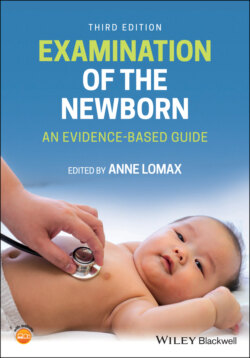Читать книгу Examination of the Newborn - Группа авторов - Страница 33
Smoking in pregnancy
ОглавлениеSmoking is the most common substance dependency, yet the most preventable. Reduction in maternal smoking during pregnancy remains high on the public health agenda through smoking cessation initiatives as part of maternity care (NHSE 2016; NHS 2017; NICE 2018c). Clinical guidance can be found on the NICE website at http://www.nice.org.uk/nicemedia/live/13023/49346/49346.pdf. There is compelling evidence highlighting the adverse effects of maternal smoking in both the antenatal and postnatal periods (La Souef 2000; Gilliland et al. 2001; Landau 2001; Stocks and Dezateux 2003; British Medical Association 2004; Bradley et al. 2005). The adverse health implications for the newborn and older children are numerous and can impact upon mortality and morbidity.
Perhaps the most significant, devastating and publicised adverse effect of parental smoking is the increased risk of SIDS (McMartin et al. 2002; Anderson et al. 2005; Matturi et al. 2006; Sellwood and Huertas‐Ceballos 2008). The hypothesis surrounding this causal relationship is multifactorial, ranging from respiratory infection susceptibility to altered respiratory control mechanisms (Hofhuis et al. 2003). This positive association cannot be underestimated nor ignored; therefore, the prevention of SIDS is high on the maternity services' health education agenda for the newborn examination. There should be reinforcement of the potential harmful long‐term effects of smoking in the postnatal period upon the newborn and into childhood as part of the newborn NIPE health education.
